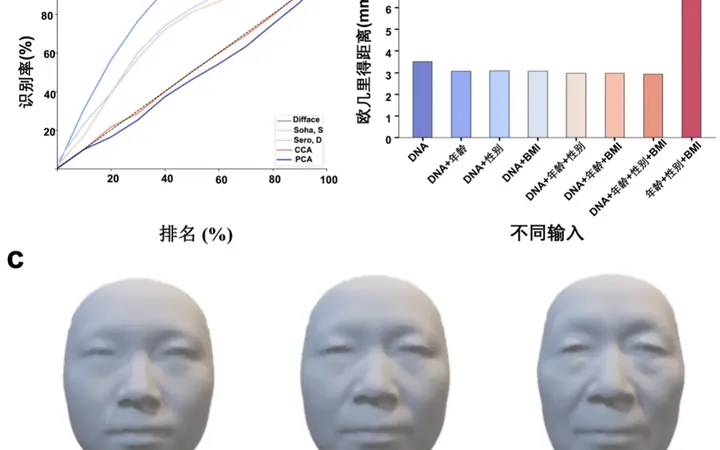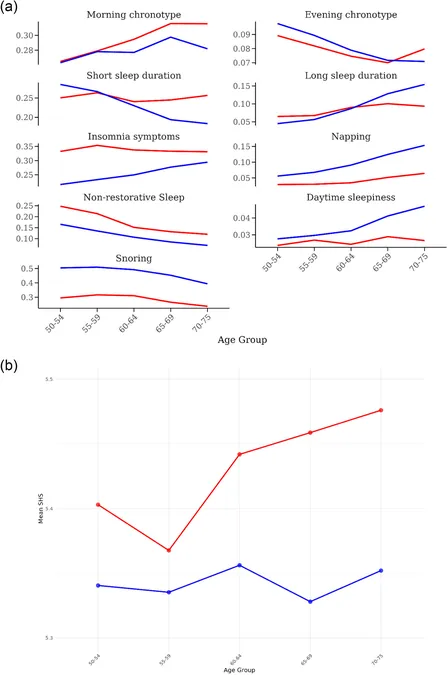
Revolutionary AI Creates 3D Faces from DNA: A Breakthrough in Forensics and Missing Persons Cases
2025-06-04
Author: Mei
Unlocking Faces from DNA: The Difface Breakthrough
In an unprecedented achievement, a Chinese research team has unveiled a cutting-edge artificial intelligence (AI) model named Difface, capable of generating lifelike 3D facial images solely from DNA sequences. This groundbreaking advancement promises to revolutionize fields such as forensic investigations and the search for missing children.
Meet the Minds Behind Difface
Leading this innovative project is Professor Chen Luonan from the Hangzhou Institute for Advanced Study (University of Chinese Academy of Sciences/Shanghai Jiao Tong University). In an enlightening conversation with the Global Times, Chen highlighted the potential applications of the technology in locating missing persons and decoding crime scene mysteries.
How It Works: The Science of Translation
Utilizing an ingenious blend of advanced AI architectures, the research team incorporated a pre-trained Transformer with spiral convolution technology. This combination enables what Chen describes as a 'spatial genetic decoder' that intricately connects genetic information with 3D visualization.
"Think of it like translating a nuanced poem into different languages," Chen elaborates. "The Transformer excels at unraveling the rich meanings within DNA sequences, while spiral convolution accurately captures the essential features that define our facial structures."
From Data to Dimension: The Creation Process
By harmonizing genetic and geometric data through a sophisticated contrastive learning process, the Difface model meticulously refines its outputs using a diffusion model. This results in highly accurate, detailed 3D representations of human faces.
Capturing Genetic Traits with Precision
According to Chen, the model can depict intricate genetic features like a recessed nasal base or pronounced nasal wings, reconstructing them with remarkable accuracy. Even when tested with diminishing DNA data—dropping from 90% to 10%—the model continued to produce reliable results.
Age and Gender Factors for Enhanced Accuracy
The Difface model constructs a face using approximately 10,000 points, each representing specific facial attributes as point clusters. Remarkably, while facial size and proportions evolve through life stages, foundational structural elements remain constant, allowing the model to adapt and simulate any age, enhancing its predictive capabilities.
A Lifeline for Missing Children and Criminal Justice
The team believes that Difface will play a pivotal role in locating missing children, generating visual projections of their current appearances based on their DNA, regardless of age. Furthermore, its applications extend into criminal investigations, where it could aid in solving cold cases by reconstructing faces from biological traces discovered at crime scenes.
Beyond Forensics: The Broader Implications
Moreover, this technology holds promise for anthropological research, potentially revealing the faces of our ancient ancestors from their DNA. In the realm of medical aesthetics, it could lead to tailored predictions regarding individual appearances based purely on genetic make-up.
Published Breakthrough: A New Era in Science
The innovative findings of this research have been recently published in the prestigious journal Advanced Science, signaling a transformative shift in the intersection of genetics, AI, and visual representation.




 Brasil (PT)
Brasil (PT)
 Canada (EN)
Canada (EN)
 Chile (ES)
Chile (ES)
 Česko (CS)
Česko (CS)
 대한민국 (KO)
대한민국 (KO)
 España (ES)
España (ES)
 France (FR)
France (FR)
 Hong Kong (EN)
Hong Kong (EN)
 Italia (IT)
Italia (IT)
 日本 (JA)
日本 (JA)
 Magyarország (HU)
Magyarország (HU)
 Norge (NO)
Norge (NO)
 Polska (PL)
Polska (PL)
 Schweiz (DE)
Schweiz (DE)
 Singapore (EN)
Singapore (EN)
 Sverige (SV)
Sverige (SV)
 Suomi (FI)
Suomi (FI)
 Türkiye (TR)
Türkiye (TR)
 الإمارات العربية المتحدة (AR)
الإمارات العربية المتحدة (AR)